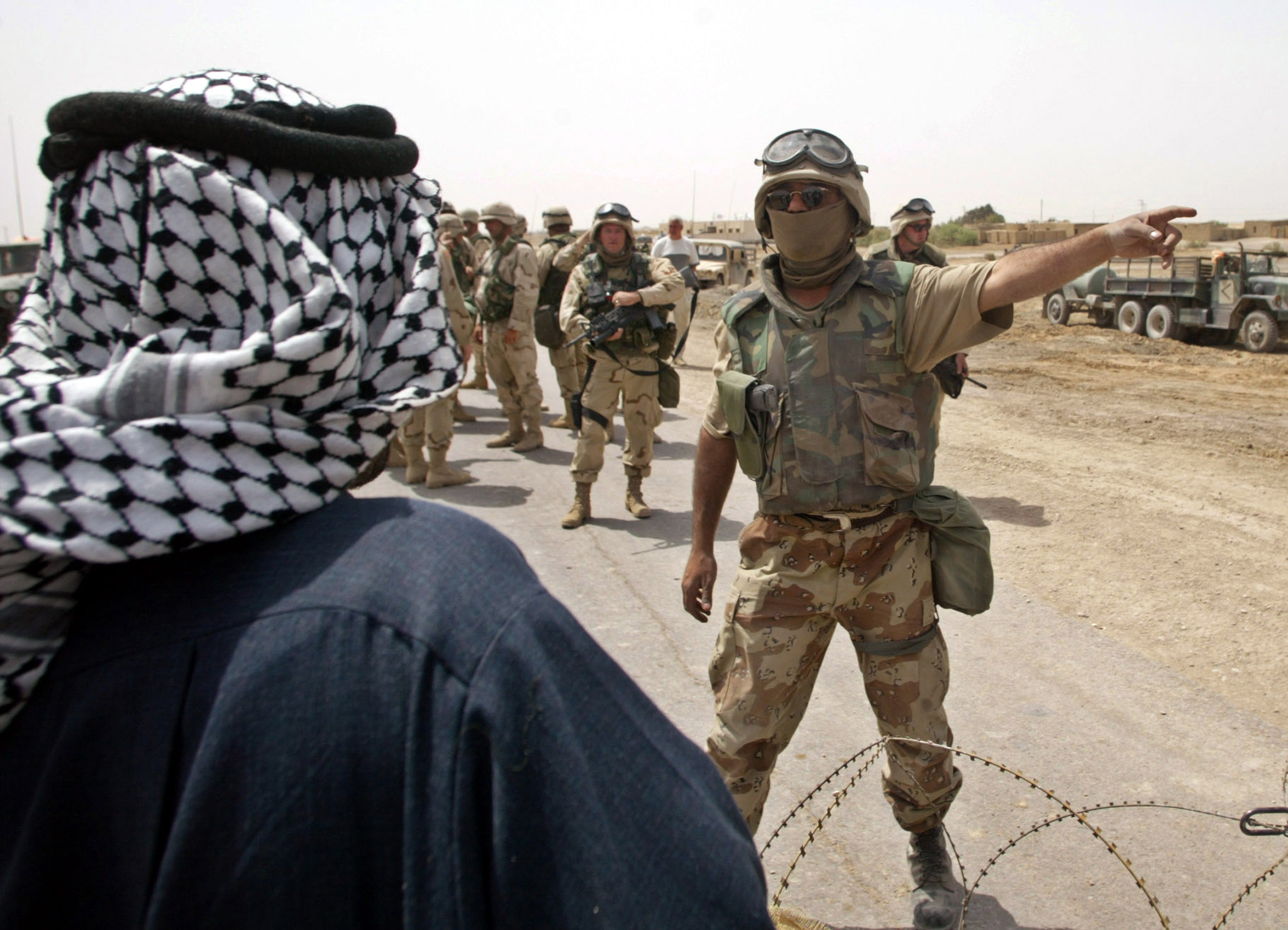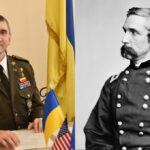
to use intelligence properly, commanders must exercise the operational art to integrate ends, ways, and means, while considering risk. There is no substitute for reflective judgment.
It would seem obvious that misinterpreting intelligence and underestimating threats can lead to catastrophic operational consequences. And yet such errors by commanders occur all too often. Commanders ostensibly use intelligence to provide clarity on the battlefield, minimize uncertainty in the unknowns, increase the probabilities of success, and reduce the fog of war. For these reasons, intelligence is the basis of all plans and operations.
It is easy to say that sound interpretation of intelligence leads to better understanding of the operating environment. Alas, the operational environment is a complex adaptive system where the various systems of friendly, adversarial, and neutral actors constantly interact. This complexity makes interpreting intelligence a dynamic phenomenon, requiring that commanders and staff learn and adapt while conducting operations. The interacting conditions, circumstances, and influences of all the systems can mislead unwary commanders and lead to failure during joint operations. Frameworks such as operational design help commanders and staffs develop and guide intelligence to properly frame the environment. However, to use intelligence properly, commanders must exercise the operational art to integrate ends, ways, and means, while considering risk. There is no substitute for reflective judgment.
Three historic cases vividly demonstrate this principle: the Vicksburg campaign, the Guadalcanal campaign, and Operation Iraqi Freedom (OIF). Each shows how the commanders’ interpretations of intelligence changes perceptions of risk, thus influencing the achievement of operational objectives.
The Vicksburg Campaign
In the Vicksburg campaign, Major General Ulysses S. Grant knew that achieving greater gains required running greater risks. The campaign is a clear example of the effective practice of operational art, one based on a clear connection between intelligence, risk, and the arrangement of tactical actions, all to gain and maintain a position of relative advantage and freedom of maneuver over the Confederates and exploit the initiative.
Grant used reconnaissance operations to provide relevant intelligence, improve his situational awareness, inform his understanding of the complex operating environment, reframe the problem he was facing, and enlighten his decision-making process. His creative and reflective thinking and the feedback from on ground intelligence enabled him to generate the adequate operational approach that fitted the changes in his environment. He understood the sense of historical contingency that Clausewitz stressed as vitally important to understand how military actions came to occur.
During the night of 29 April 1863, after the failure of a forced landing on Grand Gulf, Grant decided to land at the Rodney Bluff river interface twenty miles further south. Meanwhile, he ordered his reconnaissance to cross to the eastern bank of the Mississippi River and seek information on an alternative landing site and roads running inland. They identified a plantation site at Bruinsburg, roughly ten miles south of Grand Gulf. Grant saw in this intelligence a crucial opportunity, and he decided to seize it.
Grant was an adaptive leader who knew the importance of intelligence to assess the environment continuously, reframe the problem he faced, and change his plans. The additional information about Bruinsburg could have been disregarded, but Grant readily questioned his previous assumptions, and subsequently changed his choices. He learned and adapted while fighting. The landing at Bruinsburg was a turning point in the Vicksburg campaign and placed Grant for the first time on the dry eastern side of the river. Vicksburg shows that intelligence efforts are vital for mitigating risk. Good intelligence can generate unforeseen opportunities and help commanders to reframe the problem and modify the operational approach, thus seizing the initiative to attain desired objective.
The Guadalcanal Campaign
The Guadalcanal campaign (1942-1943) illustrates how intelligence gathered by air reconnaissance created opportunities, shaped risk considerations, and influenced the Allies choices. Richard B. Frank wrote that the intelligence reports of an airfield construction on Guadalcanal led to a chance in plans. As a result of this intelligence, Guadalcanal, not marked as a target in initial planning, was substituted for the Santa Cruz Islands. Although the US Navy and Marines were not adequately prepared for a major amphibious assault, the intelligence led the Joint Chiefs of Staff to conclude that capturing and defending Henderson airfield was worth the significant operational risk entailed. Thus was born Operation Watchtower, one of the decisive campaigns of the Pacific war.
Intelligence reports gave the Joint Chiefs of Staff information to build a holistic view of the complex operating environment, enabling them to address the problem as a whole. The construction of Henderson airfield represented an external input and positive feedback that modified the environment and required reframing the problem to define a new operational approach. The Japanese airfield construction and their supply activities on the “Tokyo Express,” would have enabled them to bomb the advanced Allies base at Espiritu Santo and threaten their supply lines of communication to Australia and New Zealand. Finally, in their emergent plans to re-gain the offensive in the Pacific, the Allies also saw Henderson airfield an essential staging base for future operations.
The Joint Chiefs of Staff understood the complexity of the operational environment and the interactions between its parts. Admiral Ernest J. King, US Chief of Naval Operations, Admiral Chester W. Nimitz, Commander in Chief Pacific Fleet, and their staffs employed operational art to develop plans, taking the risk to accelerate the tempo of operations under ambiguous conditions and a compressed timeline. The tactical and operational intelligence provided to the Joint Chiefs of Staff revealed a rapidly evolving situation throughout the operation, enabling continuous reassessment and reframing of the problem, and leading to adaptations in the operational design. Even when things went very badly, the U.S. and its allies were prepared to change their approach to fit the situation and eventually achieve victory.
The landing of the first Marine Division, the “Old Breed,” on August 1942 in Guadalcanal was a turning point in the campaign. The slow reaction of the Japanese to the seizure of Guadalcanal demonstrated their inability to penetrate inside the Allies “OODA Loop”, ceding the initiative in the South Pacific to the Allies. Seizing Henderson airfield surprised the Japanese and enabled a new operational approach for the Allies – air fields are hard to sink. The Allies could build-up air power close to operations and employ “a continual pattern of attack” on Japanese forces. Throughout the unified land operations, Allied intel enabled the Marine Division to maintain tempo, staying “one step ahead” of each Japanese attack.
Over the course of the campaign, the Japanese launched several counter-offensives to re-take the airfield, including three significant land battles, five massive naval battles, daily aerial attacks, and a final epic maritime battle in November of 1942 that was a major blow to Japanese efforts. By February 1943, all Japanese forces were off the island. The Guadalcanal campaign shows the crucial role that intelligence plays in understanding and shaping the operating environment. The U.S. was simply better at turning data into information, resulting in a more accurate understanding of a rapidly changing environment, leading to better solutions and operational success.
Operation Iraqi Freedom
A more recent operation reveals the costs of the poor use of intelligence. Beginning on 19 March 2003, Operation Iraqi Freedom (OIF) involved major combat operations in the U.S.-led invasion of Iraq. OIF quickly accomplished its tactical objectives, but was at best strategically indecisive, and at worst the catalyst of a prolonged and costly insurgency against the U.S. occupation.
The essence of operational art is to determine time, location, and purpose of major forces deployment to influence the enemy forces before operations. In the initial invasion, the United States Central Command (USCENTCOM) commander, Gen. Tommy R. Franks, and his staff nearly perfected the war’s first grammar and succeeded in overthrowing Saddam Hussein’s regime. On May 1, President Bush proclaimed “mission accomplished” and marked the end of major combat operations. When the protracted conflict in the form of an insurgency erupted and the US military encountered the second grammar of war, counterinsurgency warfare was not present in US military doctrine.
What led to this marked disconnect between the first and subsequent phases of the war? The US military senior leadership assumed a stable, pro-American, and democratic Iraq after Saddam was removed. Furthermore, USCENTCOM “key planning assumptions” were that the U.S. would co-opt Iraqi forces, and that these forces would help the U.S. secure the country, with only 5,000 U.S. troops remaining by December 2006. These naïve and optimist assumptions hindered the U.S. military leadership’s ability to re-assess the environment, and made them too reluctant to acknowledge the possibility of an insurgency. The U.S. military’s strategic reluctance to adapt to a changing situation was exacerbated by willful ignorance of the on-the-ground tactical and operational intelligence to understand the interrelations between different interconnected systems of the complex operational environment.
The counterinsurgency problem that the U.S. faced was an ill-structured problem characterized by a complex system of ethnic, political, religious, cultural problems. Stability operations and counterinsurgency warfare require a detailed understanding of sociocultural factors and associated behavior motivations and perspectives of relevant actors, including the local politics, beliefs, traditions, and religion that would ultimately determine the success of stabilization efforts. The U.S. military developed this understanding the hard way, putting itself through a crucible that it could have avoided. Seen not as a liberator but as a hated occupier, the U.S. had to fight a guerrilla war and regain the trust of a people who saw it as a Christian crusader imposing its will in Islamic Iraq. Intelligence is not simply the gathering of data from the environment. The world is vast and complex. Intelligence operations tend to answer the questions they are designed to ask. Throughout the first three years of the U.S. occupation of Iraq, intelligence was drowning in a confused sea of strategic narratives. There was little strategic coherence to U.S. operations, and intelligence both contributed to and suffered from this condition.
Incomplete and inaccurate intelligence gathering contributed to a poor usage of the USCENTCOM intel warfighting function in Iraq and an incomplete situational understanding by its commander and staff, estimates in support of the decision-making process. The protracted conflict they found themselves fighting requires winning the public opinion’s support and limiting collateral damage more than just military force. Moreover, the procedures to collect, process, exploit, and share critical information from the tactical unit assets to support the tactical fight was initially slow. Thus, the USCENTCOM commander and staff struggled to adapt and respond to new risks.
The increased availability of intelligence does not invariably lead to a more rapid understanding of the changing environment. Data and information are not the same.
It was not until later in OIF that human intelligence operations were into military intelligence companies at the brigade combat team level, allowing faster response and sounder decision-making. Additionally, units started incorporating intelligence assets such as non-governmental organizations, intergovernmental organizations, Provincial Reconstruction Teams, and other key actors. This tactical and operational level were solutions to gain a better understanding of the environment, fed the commander’s decision cycle, and allowed the staff to reframe the problem. These assets were particularly important for exploiting the opportunities especially those created by the against Al-Qaeda fighters and facilitators in the communities and enabled USCENTCOM commander and staff to get inside the adversary’s decision cycle.
Clausewitz explained that friction in war comes from the difficulty of recognizing information accurately and represents the main source of the gap between planning and execution. OIF is a clear example of how incomplete and untimely tactical and operational intelligence can impede commanders’ ability to understand and shape a rapidly changing environment. This leads to misinformed operational plans and generates unforeseen risk, jeopardizing the success of operations.
Implications
What is striking about the three cases is how the increased availability of intelligence does not invariably lead to a more rapid understanding of the changing environment. Data and information are not the same. Data becomes information when it obtains enough meaning and significance to influence a decision. In OIF, a huge quantity of data about current operations was available, but leaders struggled to recognize which parts of that mountain of facts were meaningful, a problem that was compounded by the U.S.’s reluctance to acknowledge the reality of a native Iraqi counter-insurgency.
OIF is probably not going to be an exception in modern warfare. The reliance on over-the-horizon, kinetic capabilities that require limited understanding and contribute even less information reduces the commander’s ability to build, modify and use situational understanding to stay ahead of the enemy.
Intelligence contributed to victory in Vicksburg and Guadalcanal, but proved a vulnerability in Iraq. Operational art is systems thinking that takes planners beyond the linear cause-effect ways of addressing problems to the interrelationships and interconnectivity within the systems that constitute a complex, adaptive operational environment. Intelligence is a critical enabler of this systems thinking, allowing commanders and staffs to revise their understanding and visualization of the environment, the problem, and the desired end state and adjust with the changes to derive a new operational approach for solving the problem.
The risk of repeating this mistake should make the joint force uncomfortable. Commanders depend on intelligence to mitigate fog and friction in war, minimize uncertainty and danger in the conduct of war, and understand how to shape the arrangement of tactical actions to achieve desired strategic outcomes. The approach to intelligence in OIF is not a model for future success. The question that should be asked is how intelligence can change to improve the ability of commanders at all levels to assess the operating environment, and to generate opportunities to seize the initiative necessary to fight and win in war.
Jean Dagher is a major in the Lebanese Army and a student of the School of Advanced Military Studies, Command and General Staff College, Fort Leavenworth. The views expressed in this article are those of the author and do not necessarily reflect those of the U.S. Army War College, U.S. Army, or Department of Defense.
Photo: An Iraqi Freedom Fighter (FIF) soldier, working with U.S. troops, stops an Iraqi at a roadblock near Ur, the biblical birthplace of the prophet Abraham, as delegates from Iraq’s many factions discuss the role of religion in the future government and ways to rebuild the country April 15, 2003. A U.S.-sponsored forum that brought Iraqi opposition leaders together began Tuesday as Shiite Muslim groups boycotted the meeting and people protested nearby.
Photo credit: REUTERS/Desmond Boylan REUTERS DB/AA




